- Home
- J. A. Jance
Lying in vait jpb-12 Page 2
Lying in vait jpb-12 Read online
Page 2
It was early in November, and all the boats were in port. On the east side of the pier stood a long line of two-masted wooden fishing schooners. A few were old sailing vessels that had been converted from wind-driven to diesel propulsion. The others had been built with engines but had carried sails as well at one time. These old wooden boats, used by long-line fishermen to harvest halibut and black cod, were berthed down one side of the planked dock. On the other side were the seine-style-pilothouse-forward-long-liners. On Dock 4, next door to the west, were the salmon seiners, recognizable by their raised mainbooms and open afterdecks.
I wouldn't have known the difference if it hadn't been for Aarnie "Button" Knudsen, one of the guys I once played football with for the Ballard High School Beavers. The summer between our junior and senior years in high school, Button invited me to come work on his father's salmon boat. He told me it was a great part-time job, one he'd had every year from the time he was eleven.
I'm sure it would have been a good deal-if I had ever made it to the fishing grounds, that is. Unfortunately, it turned out I was a terrible sailor. I signed on, but by the time we reached Ketchikan in southeastern Alaska, I was so horribly seasick that Aarnie's disgusted dad gave up, put me off the boat, and finagled me a ride home. Who knows? Had things been different-had I actually found my sea legs and followed in Button's family footsteps-I might never have become a homicide detective. I might have spent my life slaughtering fish instead of studying slaughtered people.
Out beyond the buildings, we came to the place where the fire department had set up a perimeter by roping off the wooden pier at the point where it met a wider paved section. A group of old salts in coveralls, men I suspected to be mostly of Norwegian descent, stood talking to one another in subdued tones, all the while uneasily eyeing the charred wreck of a boat halfway down the dock.
I come down to Fishermen's Terminal sometimes, just to walk around. Early on a chill late-fall morning like this one was, it can be a seemingly idyllic place. Noisy gulls wheel overhead, appearing and disappearing, flying in and out of the fog. Water laps against the pilings. Boats shift and creak, occasionally thumping against the pier. But this idyllic setting is only that-a setting, like the flat backdrop painted on a stage.
The foreground holds the action where a troupe of men do the "work" of fishing-repairing boats and nets, cleaning fish-holes, hosing, painting, building bait benches and fish pens. I have utmost respect for these guys who, year in and year out, pit themselves not only against the unforgiving sea but also against the vagaries of international politics and government regulation. Most of them are independent as hell and more than slightly ornery-a little like the mythical cowboys of the Old West. Come to think of it, a little like me.
On this particular morning, I supposed that most of them had come to work early expecting to spend the day working on their wintertime maintenance logs. Instead of overhauling engines and preparing for the next season's first opener, however, they were stranded far from their boats on the landward end of the dock. From the grim looks on their faces, I realized word must have spread that someone was dead-most likely one of their own.
A uniformed harbor-patrol officer named Jack Casey glanced at Sue's I.D., nodded to me, and waved us through the barrier. "Any idea who it is?" I asked him on my way past.
Casey shook his head. "All I've heard from the firemen is that the stiff's too crisp to I.D."
"Oh."
Sue and I made our way down the dock. Even without having been told beforehand, I would have known we were walking into a fatality fire just from the appearance of the firemen we encountered along the way. They had done their job promptly and well. Not only had they managed to put out the fire, they had kept the blaze confined to only one boat-a schooner called Isolde. The flames hadn't spread either to the pier or to any of Isolde 's nearby neighbors. Even the Isolde herself hadn't burned on the outside, although the forward portion of the boat was heavily damaged.
In terms of fire-fighting success, that should have been a clear-cut victory. But the men and women I saw rolling up their hoses were a bedraggled, disheartened-looking crew. Someone had died in the blaze. Firefighters always take fire deaths hard, as though each and every person lost in a fire is a personal affront-a needless fatality they somehow should have been able to prevent. It's an occupational hazard, I understand all too well. Murder victims affect me exactly the same way.
A few feet from the Isolde a husky firefighter still in yellow coveralls and heavy rubber boots broke away from his companions and hurried toward us. "You from Seattle P.D.?"
Only when I heard the voice did I realize the firefighter was a woman, not a man. Her hair was cut short. Her broad shoulders were muscular, her at-ease stance seemed to reflect some kind of military training. In her early thirties, she looked tough but capable-the kind of woman who's instantly intimidating to a lot of men, but someone you wouldn't mind having on your side during an emergency.
"Detective Beaumont," I answered. "And this is Detective Danielson."
"I'm Lieutenant Marian Rockwell," she returned. "Seattle Fire Department, Arson Investigations."
Seattle's fire department has a team of arson investigators who carry weapons and are authorized to make arrests when necessary. Once the ashes and debris are cool enough to handle, the arson investigators are called in to do their stuff. They handle some fires entirely on their own, but when someone dies as a result of a fire, whether accidental or deliberately set, Seattle P.D.'s Homicide Squad comes into the picture. In those instances, we handle the investigation jointly.
"What's going on?" Sue asked.
"We got to it fast enough that it didn't have a chance to spread outside the fo'c'sle," Lieutenant Rockwell said, abbreviating the word "forecastle" to the approved nautical pronunciation of "foc'sul."
"One crew is just now finishing mopping up and checking for hot spots," Lieutenant Rockwell continued. "We should be able to go on board fairly soon now-as soon as the investigator from the Medical Examiner's Office gets here."
It's always a race between Doc Baker's folks and Homicide to see who reaches a crime scene first. We don't exactly keep score, but people from our squad always want to arrive before one of the M.E.'s somber gray vans. I was glad Sue Danielson had put the little Mustang through its paces.
"They'll show up eventually. Any idea whose boat this is?" I asked, taking out my notebook while Lieutenant Rockwell consulted one of her own.
"The guy who called in the nine-one-one report said it belonged to someone named Gunter Gebhardt."
"Nice Irish name. Pretty unusual for around here," I said.
"Why?" Sue Danielson asked.
Sue's from back East somewhere. Cincinnati, I think, so she could be forgiven for not knowing beans about Seattle's fishing fleet.
"Most of these halibut guys are born and bred squareheads," I explained. "An occasional Dane or Swede here and there, but mostly they're lutefisk-eating Norwegians through and through."
The soot-creased lines around Marian Rockwell's brown eyes wrinkled with amusement. "I thought so, too," she said. "No doubt the guy who made the initial call is. Alan Torvoldsen. Is that Norwegian enough to suit you? His boat's right across the way. He spotted the fire and called for help."
The very mention of Alan Torvoldsen's name rang a bell of memory that carried me right back to Ballard High. "You're kidding? Alan Torvoldsen? You mean good old ‘Champagne Al'?"
"That's not what he said his name was," Marian Rockwell replied. "At least not in the report that came to me."
The Alan Torvoldsen I remembered was a couple of years older than I was. A senior when I was a lowly sophomore, he had been the big man on campus-a high-school playboy, someone who sported new cars, flashy clothes, and a ducktail with never a single hair out of place.
Just as Button Knudsen worked on his father's salmon seiner, Alan and his younger brother, Lars, spent summers on their father's halibut boat. The Knudsens were nondrinking straight arrow
s. The Torvoldsens weren't. Red Torvoldsen was never far from his flask of aquavit, and the boys were a matched set of hellions. Alan was two years older than I was, while Lars was two years younger.
Even in high school, Alan was a booze-drinking chip off the old block. According to BHS legend, "Champagne Al" Torvoldsen didn't go anywhere without at least one case of beer stashed in the back of his '56 Chevy.
The prom during his senior year was the pinnacle of Alan Torvoldsen's high school career. During the dance, he and his long-term girlfriend, Else Didriksen, were crowned king and queen of the prom. To celebrate, Alan invited everyone to an after-prom party to be held at the far north end of Carkeek Park. That infamous blowout-a party that is still spoken of in hushed tones at Ballard High reunions-came complete with fifteen cases of cheap champagne. It earned Alan Torvoldsen his lifelong nickname of "Champagne Al." It was also his undoing.
Cops busted the party only eight or nine cases into the program. The debauch may have been broken up early, but not nearly early enough as far as some disturbed parents were concerned. Before the arrival of the cops, several highly intoxicated young women-normally prim and proper Lutheran daughters of local Ballard area gentry-had shed not only important parts of their clothing, but several of their respective maidenheads as well.
A delegation of outraged parents descended on the principal's office early the following Monday morning. Looking for blood, they wanted someone to blame-someone who wasn't their own particular offspring. Alan Torvoldsen took the rap for everybody, and he paid big.
Despite a fair but unremarkable academic record, Alan was summarily expelled from school without ever being allowed to graduate. Within weeks, "Champagne Al" was drafted into the army and shipped off to Southeast Asia. Even at the time it had seemed like a miscarriage of justice to hold him accountable for everybody's drunken behavior, but that was the way things worked back then. Near as I can tell, nothing has changed.
Champagne Al got drafted and headed off for Vietnam. I finished up my high school career, and in the intervening years our paths had never once crossed. I hadn't even heard Alan Torvoldsen's name mentioned, not until now.
Audrey Cummings, King County's assistant medical examiner, showed up right about then, accompanied by my old buddy Janice Morraine, the second-in-command criminalist from the Washington State Patrol crime lab. Seeing them together, the old comics characters Mutt and Jeff came instantly to mind.
Audrey is your basic fireplug of a woman. Short, sturdy, stocky, no-nonsense, and a tad beyond middle-aged. Janice Morraine is tall and spare, angular where Audrey is round. Audrey is a nonsmoking vegetarian. Janice smokes like a fiend. Both of these talented women are sharp and politically adroit. Both of them have bubbled to the top in work situations where women have traditionally been excluded rather than encouraged. Young cops of both sexes who make the mistake of not according those two ladies the professional respect they deserve do so at their own risk.
Lieutenant Rockwell cast an appraising glance around the group. "Is this everybody?"
"As far as I can tell," Sue told her.
"This way, then."
Marian Rockwell passed out day boots for us to wear, then led the way toward the Isolde, followed by the rest of us. As I attached myself to the end of the line, I realized, for the first time, that in terms of Equal Opportunity, the investigation into the death of whoever had been on board the Isolde was breaking new ground-even in the politically correct world of Seattle P.D. All but one of the five investigators assigned to the case were women. Four to one.
Four of them and one of me.
Marian Rockwell was the only one of the group properly dressed for the grit and grime of a fire-scene crime investigation. The other women gamely hitched up their skirts and then scrambled over the wet, soot-encrusted rail and down onto a filthy deck covered with piles of wet, ankle-twisting coils of line, meandering hoses, and evil-smelling debris.
As I watched the women clamber over the rail one by one, I couldn't help thinking, You've come a long way, baby.
Because they had. All of them.
2
Decks of commercial fishing vessels make for treacherous going in the best of times. Now maneuvering on the Isolde 's deck was downright dangerous. It was covered with water topped by a layer of slick, oily slime that left zero traction and made walking hazardous. We waded our way forward past the last of the grim-faced firemen who were wrestling with an impossible tangle of hoses.
One of the firefighters caught my eye. "Good luck, fella," he said, just loud enough for me to hear him. I wasn't entirely sure what he meant, but I had a pretty good idea.
I smelled it almost as soon as I stepped on deck-an odor not unlike that of baked ham. As we neared the entrance to the fo'c'sle, the combination of residual smoke and charred rubber and wiring obscured the unmistakable odor of cooked human flesh.
The shattered hatchway door was the first thing I noticed. In an effort to reach the fire, someone-a fireman, most likely-had broken the hatch-splintered the middle of it, probably with an ax. But the edge of the door was still attached to the frame, held there by a metal hasp over which dangled a still-locked padlock. That padlock had been locked in place prior to the fire, by someone standing outside the closed hatch.
Janice and the others had gone on ahead, climbing over the sill of the hatch and disappearing down into the inside gloom. I paused outside long enough to jot a note, reminding myself to mention to Janice that the padlock as well as the remains of the hatch should be checked for fingerprints in case any had managed to survive both the fire and the firefighting.
Men my size aren't built for fishing boats any more than we're built for airplanes. I whacked my head on the hatch cover as I stepped down onto a makeshift metal ladder that had been placed in the companionway. The temporary ladder replaced the permanent one that, if not too badly charred, might well retain some critical fingerprints of its own.
Down in the darkened galley, with the interior lit only by the shallow light coming in through a fire-ax-created skylight, and with the water sloshing around my ankles, I found myself staring at a hellish scene.
It took a few moments for my eyes to adjust to the gloom. The fire hadn't burned long enough or hot enough for flesh to come off the bones. What I saw through the thick, smoke-dense air, was the still-recognizable form of an extraordinarily large man lying faceup on what was evidently the triangular, three-legged galley table. The cheeks of his face were strangely distended, like someone gathering up a mouthful of wind to blow out candles on a birthday cake.
It's funny what will strike you as odd in a situation like that. The first thing I thought about was a damn birthday cake. The second thing was the table.
Why was the victim lying on the table? I wondered. It didn't make sense for someone to be there. In bed? Yes. I could understand that perfectly. And I could see how someone might end up on the deck, especially if they were crawling on their hands and knees in an effort to avoid smoke and flames.
"What's he doing on the table?" I asked, moving forward to stand beside Sue Danielson, who had been next-to-last and who stood just ahead of me in line.
"Handcuffs," she replied, her voice tight and strained.
I saw them then, too. Three pairs of handcuffs, in fact. The man's shoulders were broad enough so that they almost covered the wide end of the three-cornered table, the part that was nearest the door. Bent at the elbow, his powerful forearms hung down beside and were fastened to the two chrome legs that supported the table's surface. Both wrists were secured to the table legs by locked metal cuffs. His legs dangled off on either side of the narrow part of the triangle with the ankles fastened together with cuffs just inside the table's third chrome leg.
Whoever had put the man there had meant for him to stay in exactly that spot. Permanently.
"Look at this," Marian Rockwell said, coming full circle around the far side of the galley so she was back behind me. Using a flashlight, she pointed to something
in the sink. "The firefighter who found him said this was on the victim's chest. He had to move it so he could check vitals."
We had come in single file. Since I was the last one in line, I was also the person closest to the sink. What I saw was a metal plate of some kind-a pie plate, maybe-with what looked like so many pieces of charred hot dog lying in the bottom.
"What is it?" I asked stupidly, squinting through the dim light.
"I think it's his fingers and toes," Marian Rockwell said in a hushed tone. "All twenty of them. I think they were cut off while he was still alive and left where he could see them. In fact, they were probably the very last thing he could see."
That announcement was followed by stunned silence. Homicide cops can't afford to be queasy, but right then a rebellious bubble of morning coffee rose dangerously in my throat. Behind me one of my cohorts made a strange, strangled noise that sounded very much like someone attempting to stifle an overwhelming urge to gag.
After first letting her breath go out in a carefully controlled whoosh, Janice Morraine was the one who spoke. "Okay, folks," she said. "Let's get the hell out of here. No one touches anything at all until after we get the police photographer down here to take pictures."
Her order was one we were all only too happy to obey. From a crime-scene-investigation standpoint, that was the only sensible solution. Too many people in a confined area at once are bound to disrupt things. In a crowd like that, someone can easily, if inadvertently, destroy a critical piece of evidence.
But it was also a good call in terms of people. We were every one professionals in a world where evidence of man's inhumanity to man is business as usual. But the idea of cutting off some poor guy's fingers and toes and then leaving him to burn to death went far beyond the range of mere murder. This was murder with all the trimmings-murder with mayhem and mutilation thrown in for good measure. We all needed a chance to decompress.

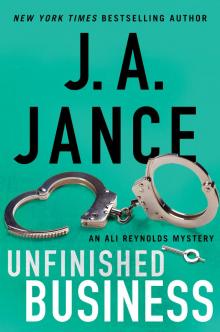 Unfinished Business
Unfinished Business Missing and Endangered
Missing and Endangered Man Overboard
Man Overboard The Old Blue Line
The Old Blue Line Trial by Fury
Trial by Fury Edge Of Evil
Edge Of Evil Field of Bones: A Brady Novel of Suspense (Joanna Brady Mysteries)
Field of Bones: A Brady Novel of Suspense (Joanna Brady Mysteries) After the Fire
After the Fire Deadly Stakes
Deadly Stakes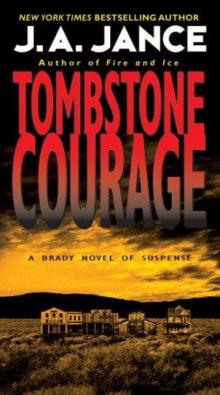 Tombstone Courage jb-11
Tombstone Courage jb-11 Justice Denied
Justice Denied J P Beaumont 16 - Joanna Brady 10 - Partner In Crime (v5.0)
J P Beaumont 16 - Joanna Brady 10 - Partner In Crime (v5.0) Dance of the Bones
Dance of the Bones Exit Wounds
Exit Wounds Left for Dead
Left for Dead Partner In Crime
Partner In Crime Brandon Walker 02 - Kiss Of The Bees (v5.0)
Brandon Walker 02 - Kiss Of The Bees (v5.0) Name Witheld jpb-13
Name Witheld jpb-13 Joanna Brady 01 - Desert Heat (v5.0)
Joanna Brady 01 - Desert Heat (v5.0) Proof of Life
Proof of Life Random Acts
Random Acts Day of the Dead bw-3
Day of the Dead bw-3 Shoot / Don't Shoot jb-3
Shoot / Don't Shoot jb-3 Without Due Process
Without Due Process Fatal Error ar-6
Fatal Error ar-6 Payment in Kind
Payment in Kind Long Time Gone
Long Time Gone Minor in Possession
Minor in Possession Stand Down
Stand Down Judgment Call
Judgment Call Betrayal of Trust jpb-20
Betrayal of Trust jpb-20 Hand of Evil
Hand of Evil Devil's ClawJ
Devil's ClawJ Lying in vait jpb-12
Lying in vait jpb-12 Day of the Dead
Day of the Dead Without Due Process jpb-10
Without Due Process jpb-10 Until Proven Guilty jpb-1
Until Proven Guilty jpb-1 Field of Bones
Field of Bones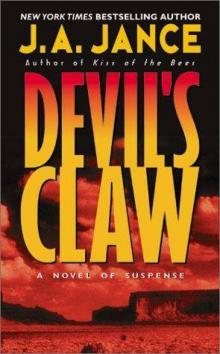 Devil’s Claw
Devil’s Claw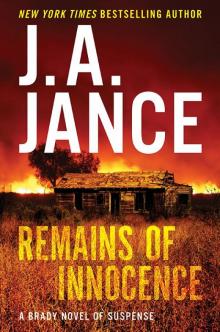 Remains of Innocence
Remains of Innocence Injustice for All
Injustice for All Web of Evil ar-2
Web of Evil ar-2 Paradise Lost jb-9
Paradise Lost jb-9 Improbable cause jpb-5
Improbable cause jpb-5 Skeleton Canyon
Skeleton Canyon No Honor Among Thieves: An Ali Reynolds Novella (Kindle Single)
No Honor Among Thieves: An Ali Reynolds Novella (Kindle Single) Dead to Rights
Dead to Rights Alison Reynolds 01 - Edge Of Evil (v5.0)
Alison Reynolds 01 - Edge Of Evil (v5.0) Ring In the Dead
Ring In the Dead Ring in the Dead: A J. P. Beaumont Novella
Ring in the Dead: A J. P. Beaumont Novella Clawback
Clawback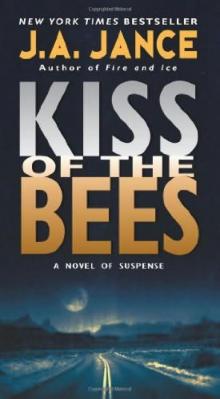 Kiss the Bees bw-2
Kiss the Bees bw-2 Fire and Ice jpb-19
Fire and Ice jpb-19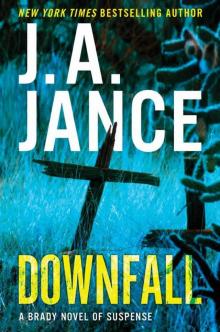 Downfall
Downfall Deadly Stakes ar-8
Deadly Stakes ar-8 Fatal Error
Fatal Error Name Withheld
Name Withheld Duel to the Death
Duel to the Death Cold Betrayal
Cold Betrayal Betrayal of Trust
Betrayal of Trust Web of Evil
Web of Evil Outlaw Mountain
Outlaw Mountain Shoot Don't Shoot
Shoot Don't Shoot A Last Goodbye
A Last Goodbye Ali Reynolds 08 - Deadly Stakes
Ali Reynolds 08 - Deadly Stakes Hour of the Hunter: With Bonus Material: A Novel of Suspense
Hour of the Hunter: With Bonus Material: A Novel of Suspense Trial by Fire
Trial by Fire Exit Wounds jb-11
Exit Wounds jb-11 Hand of Evil ar-3
Hand of Evil ar-3 Failure to appear jpb-11
Failure to appear jpb-11 Tombstone Courage
Tombstone Courage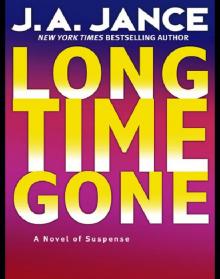 Long Time Gone jpb-17
Long Time Gone jpb-17 Kiss of the Bees w-2
Kiss of the Bees w-2 Edge of Evil ar-1
Edge of Evil ar-1 Cruel Intent
Cruel Intent Improbable Cause
Improbable Cause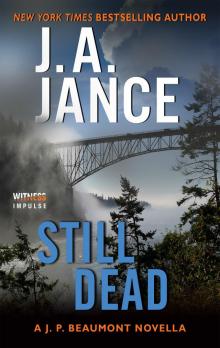 Still Dead
Still Dead Downfall (2016)
Downfall (2016) Justice Denied jpb-18
Justice Denied jpb-18 Damage Control
Damage Control Rattlesnake Crossing
Rattlesnake Crossing Desert Heat
Desert Heat Queen of the Night
Queen of the Night JP Beaumont 11 - Failure To Appear (v5.0)
JP Beaumont 11 - Failure To Appear (v5.0) Until Proven Guilty
Until Proven Guilty Minor in possession jpb-8
Minor in possession jpb-8 Left for Dead ar-7
Left for Dead ar-7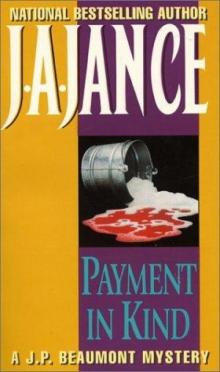 Payment in kind jpb-9
Payment in kind jpb-9 No Honor Among Thieves
No Honor Among Thieves